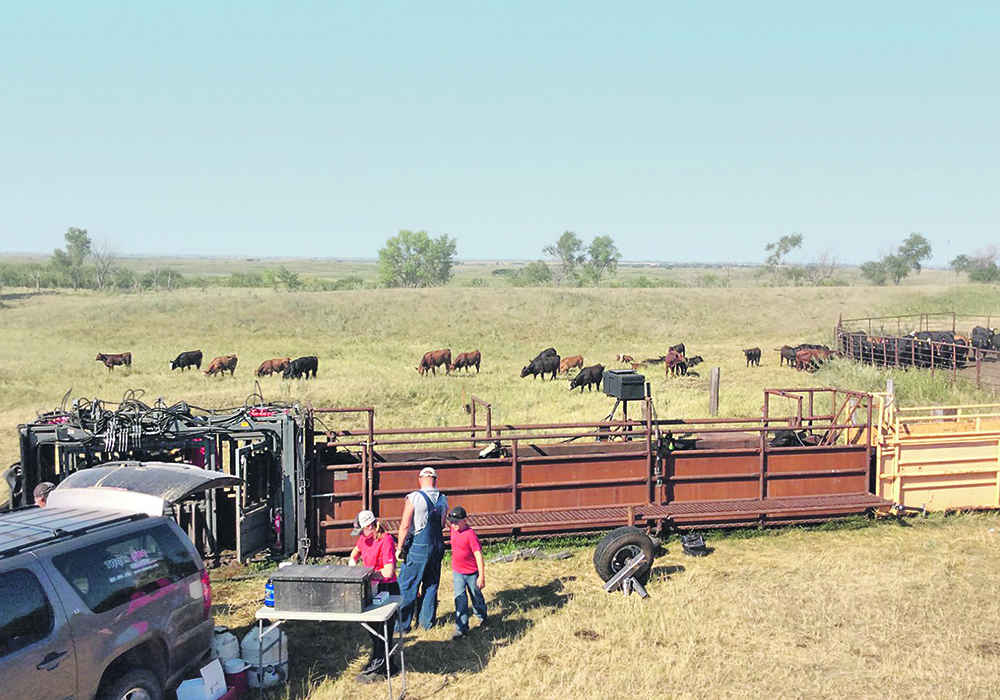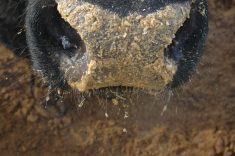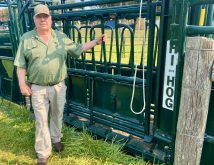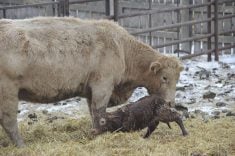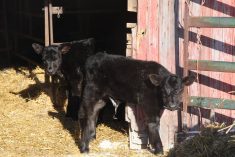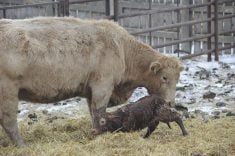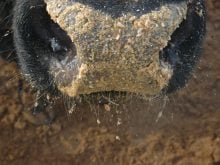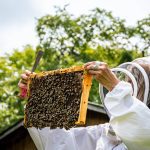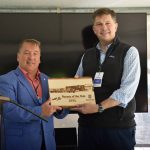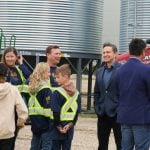Facilities can be set up anywhere, even in the middle of a large pasture, but it’s important to handle the cattle properly
Portable corrals can make handling easier when cattle are in large pastures.
Dr. Kip Lukasiewicz of Sandhills Cattle Consultants says his early experience with portable corrals occurred when he was in a cow-calf practice at Ainsworth, Nebraska. “We did a lot of pregnancy checking, Bangs vaccinations, etc. with more than 45,000 cows in that practice. All our work was done on the ranches or in the pastures. I got to see many portable corral systems. Most of them utilized portable panels the rancher set up.
“For big herds, they’d often take two trailers loaded with panels. It was interesting to see the way ranchers set up their corrals. Some just set up a circular pen and sorted calves back out to the pasture from that pen, leaving the cows in. We’d preg-check the cows and turn them out. That worked all right but was never as efficient as having two circular pens,” said Lukasiewicz.
Read Also
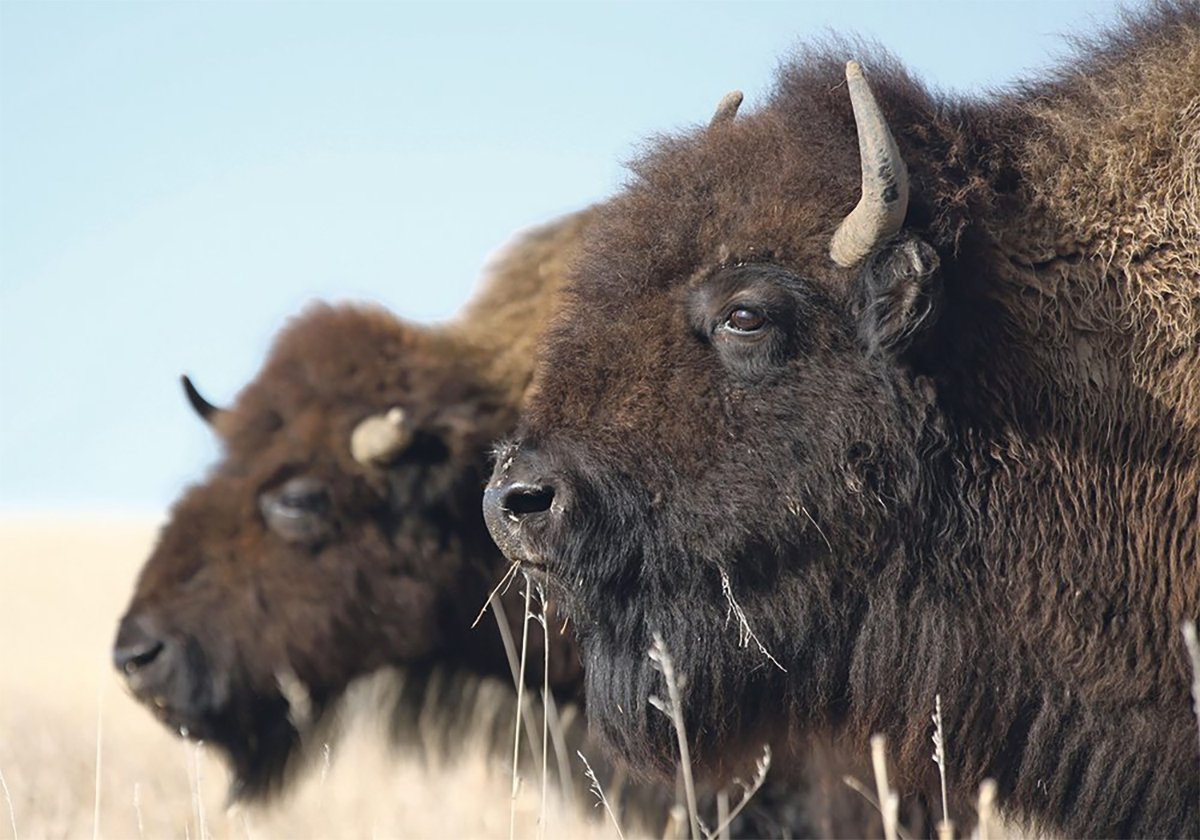
The Western Producer Livestock Report – August 21, 2025
Western Producer Livestock Report for August 21, 2025. See U.S. & Canadian hog prices, Canadian bison & lamb market data and sales insights.
An understanding of cattle behaviour is needed to efficiently sort and handle the animals, he added.
“Cattle actually crave interaction as long as it’s positive. They want to be guided, but don’t want to be forced into doing something that’s not their idea.”
In their own social structure, cattle continually interact with herd members in a dominant-submissive system. They are accustomed to moving out of the way of a more dominant individual or moving together as a herd. It is natural for them to follow one another.
“If you understand that your position — where you stand or where you ride your horse —is important, and always try to be in the right place to influence cattle to move the proper direction, you can handle them efficiently without stress. You want long, narrow lines when bringing cattle into a corral,” says Lukasiewicz.
“When gathering cow-calf pairs, you need to give calves a chance to nurse and bond with their mothers before you start moving the herd. This might mean a 15- to 30-minute wait after you’ve asked the cows and calves to pair up. If you’ve gathered 150 to 300 pair, your first goal is to get them all up or gathered together and then sit back and give them time to nurse. Then you can start moving them.”
Once pairs are mothered up, they will stay together and generally move willingly and once at the corral, they are more relaxed.
“Many people set up their portable corral system beside a pasture fence, for a wing to aim them into the corral. You can do that, and it works, but you can also set up a corral anywhere, even in the middle of a huge pasture. It’s not difficult to guide cattle to the corral if you handle them properly.”
In the corral, ideally using two round pens, Lukasiewicz recommends guiding cattle from the front rather than pushing from behind.
“If you want them to move from circle one to circle two, using the transition area between the circles, always stand between the cattle and where you want them to go and ask them to voluntarily move to the other pen. Don’t try to push them; always ask from the front. Pushing cattle is counterproductive.
“You want voluntary flow. If it is their idea, they are willing. It’s just like us. If we want to do something and it’s our idea, it’s great. If someone tells us we should do something, and it wasn’t our idea, we have some question in our mind, or reluctance, looking for something different instead.”
When sorting calves from cows, he guides cows down one alley into a pen and calves under a panel alongside the cows but in another pen. This arrangement can be set up with portable panels.
“We generally sort cow-calf pairs that way, and if we are vaccinating everything, we always vaccinate the calves first,” says Lukasiewicz. “We do the calves first because they always want to stay where mom is. If we do cows first and turn them out, they hang around either side of the two round pens and the calves want to be near mom and don’t move very well when we try to put them through.”
Fewer people will make the situation less stressful for the animals, he adds.
“We lay out portable corrals in ways to make everything simple and easy. Cattle always want to see what’s pressuring them. Some people use portable tubs and alleys, and these work fine as long as they are open on the sides so cattle can see through them.
“Some have catwalks, which are awkward for older ranchers, or even some of the younger ones with bad knees. It’s hard to get up and down from a catwalk and if it’s narrow in places there’s risk for falling off.”
Lukasiewicz is a proponent of making things as easy as possible for handlers and cattle.
Portable facilities can improve cattle management by not having to bring animals long distances for certain procedures.
“Most portable systems can be set up easily in a pasture. Some systems are on hydraulics. Even a small operation could afford these if two or three neighbours partner together,” says Lukasiewicz.
“In many regions neighbours work together when processing cattle and could share a good portable corral set-up.”

